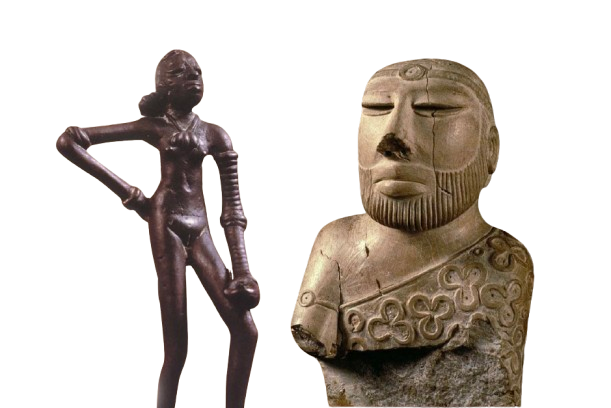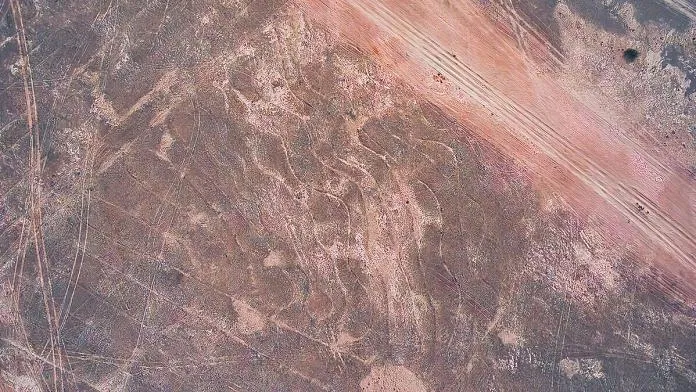Understanding Relative Dating and Absolute Dating in Archaeology
Introduction
In archaeology, understanding the timeline of human history is essential for interpreting artifacts, fossils, and structures unearthed through excavation. Two primary methods, relative dating and absolute dating, help archaeologists determine the age of these finds. While relative dating tells us the sequence of events or artifacts, absolute dating provides a precise age in years. In this comprehensive guide, we will explore both dating methods, including their techniques, advantages, and limitations, as well as how they work together to build a reliable historical timeline.
1. What is Relative Dating?
Relative dating is the process of determining the age of an object in relation to other objects or events. Instead of assigning a specific calendar date, relative dating places artifacts, fossils, or layers of sediment in a sequential order, revealing which items are older or younger.
Key Principles of Relative Dating:
- Law of Superposition: This principle states that in undisturbed layers of rock or soil, the oldest layers will be found at the bottom, and the youngest layers will be at the top. Archaeologists use this to determine the relative ages of layers and the artifacts within them.
- Cross-cutting Relationships: This principle holds that any geological feature that cuts through another is younger than the feature it cuts. This helps archaeologists date events such as volcanic eruptions or shifts in the earth’s crust.
- Inclusions and Unconformities: Inclusions are pieces of one rock contained within another. The rock containing the inclusion is younger, as the inclusion must have existed first to be included. Unconformities, gaps in the geological record, indicate periods of erosion or non-deposition that can aid in identifying relative time gaps.
Key Techniques in Relative Dating:
- Stratigraphy: As the most commonly used method in relative dating, stratigraphy involves studying the layers (strata) of earth where artifacts are found. By observing how these layers accumulate over time, archaeologists can determine the relative age of artifacts based on their position within the strata.
- Seriation: This method is based on changes in the style and frequency of artifacts, particularly tools and pottery, over time. By comparing different styles from various locations or periods, researchers can arrange them in a chronological order. For example, certain types of pottery may be more common during specific historical periods, allowing them to serve as time markers.
- Fluorine Dating: Bones absorb fluorine from groundwater over time, and the amount of fluorine they contain can help archaeologists determine how long they have been buried. Fluorine dating is particularly useful in comparing bones from the same excavation site to establish their relative age.
Advantages of Relative Dating:
- It provides a chronological framework, essential for interpreting archaeological sites where multiple layers of habitation exist.
- Simple to use in the field, with minimal equipment or specialized knowledge needed.
- Effective when used alongside absolute dating methods for a comprehensive understanding of an archaeological site.
Limitations of Relative Dating:
- It does not provide an exact date, only a sequence of events.
- Accuracy can be compromised if the stratigraphic layers are disturbed by natural or human activities such as earthquakes, floods, or construction.
2. What is Absolute Dating?
Absolute dating, also known as chronometric dating, goes beyond placing artifacts in sequential order. It assigns a specific age or date range to an object, providing a more precise timeline. This method relies on scientific techniques that measure the decay of isotopes or the rate of natural processes.
Key Techniques in Absolute Dating:
- Radiocarbon Dating (C-14 Dating): Developed in the late 1940s, this method revolutionized archaeology. Radiocarbon dating measures the amount of carbon-14, a radioactive isotope, remaining in organic material. Since carbon-14 decays at a predictable rate, scientists can determine the age of organic artifacts like bones, wood, and charcoal up to about 50,000 years old. This method is commonly used in dating ancient human settlements, tools, and artwork.
- Dendrochronology (Tree-Ring Dating): Dendrochronology involves counting and analyzing tree rings to determine the age of wooden artifacts or structures. Each ring corresponds to one year of growth, allowing archaeologists to pinpoint the exact year a tree was cut down. By correlating the ring patterns from living trees and ancient wooden objects, researchers can establish precise dates for ancient buildings, boats, or even climate changes.
- Potassium-Argon Dating: Potassium-40, a radioactive isotope found in volcanic rocks, decays into argon-40 over time. By measuring the ratio of potassium to argon, archaeologists can date rocks that are millions of years old. This method is particularly useful in paleoanthropology, where it is often used to date early human fossils found in volcanic layers.
- Thermoluminescence Dating: This method is used to date ceramics, minerals, and other materials that have been heated. When an object is heated, electrons trapped in its structure are released. By reheating the object in a lab, scientists can measure the light emitted from these electrons and calculate how long it has been since the object was last heated.
- Uranium-Series Dating: This technique measures the decay of uranium isotopes in calcium carbonate deposits, such as those found in stalactites, stalagmites, or coral. It is useful for dating cave paintings, fossils, and ancient structures made of limestone.
Advantages of Absolute Dating:
- Provides a precise age or date range, which is essential for developing accurate historical timelines.
- Many techniques can be applied to a wide range of materials, from organic remains to rocks and minerals.
- Enables cross-dating, where multiple methods are used to confirm or refine a date, increasing reliability.
Limitations of Absolute Dating:
- Some methods are only applicable to certain types of materials (e.g., radiocarbon dating for organic material, potassium-argon dating for volcanic rocks).
- Techniques like radiocarbon dating are less effective for dating objects older than 50,000 years.
- Environmental factors, such as contamination or exposure to sunlight, can affect the accuracy of some methods, like thermoluminescence or radiocarbon dating.
3. How Relative Dating and Absolute Dating Work Together
Although relative and absolute dating are distinct methods, they often complement each other in archaeological research. Relative dating helps establish the chronological sequence of events, while absolute dating assigns a precise age to key artifacts within that sequence. This combination allows archaeologists to construct detailed timelines of human history, migration patterns, and cultural development.
For example, archaeologists may first use stratigraphy to determine the order of layers at a site. Then, they can apply radiocarbon dating to organic material from a specific layer to get an exact age. By cross-referencing these findings with dendrochronology or thermoluminescence dating, researchers can confirm or refine their conclusions, resulting in a more accurate understanding of the past.
4. The Impact of Dating Methods on Archaeological Understanding
Accurate dating is crucial for interpreting historical and prehistorical events. By using both relative and absolute dating methods, archaeologists can:
- Establish precise timelines for ancient civilizations and cultures.
- Study the development of human technology, agriculture, and social structures over millennia.
- Investigate how environmental factors, such as climate change, influenced human adaptation and migration.
- Analyze the impact of natural disasters, such as volcanic eruptions, on historical populations.
- Uncover previously unknown connections between distant cultures through trade or migration routes.
Without reliable dating methods, much of human history would remain speculative, making it difficult to understand the true scope of our shared past.
Conclusion
In archaeology, dating methods like relative dating and absolute dating are indispensable tools for unlocking the secrets of the past. While relative dating provides a sequential framework for artifacts and events, absolute dating offers precise, scientifically backed ages. Together, they enable archaeologists to create comprehensive historical narratives, contributing to a deeper understanding of ancient human societies and their development over time.



